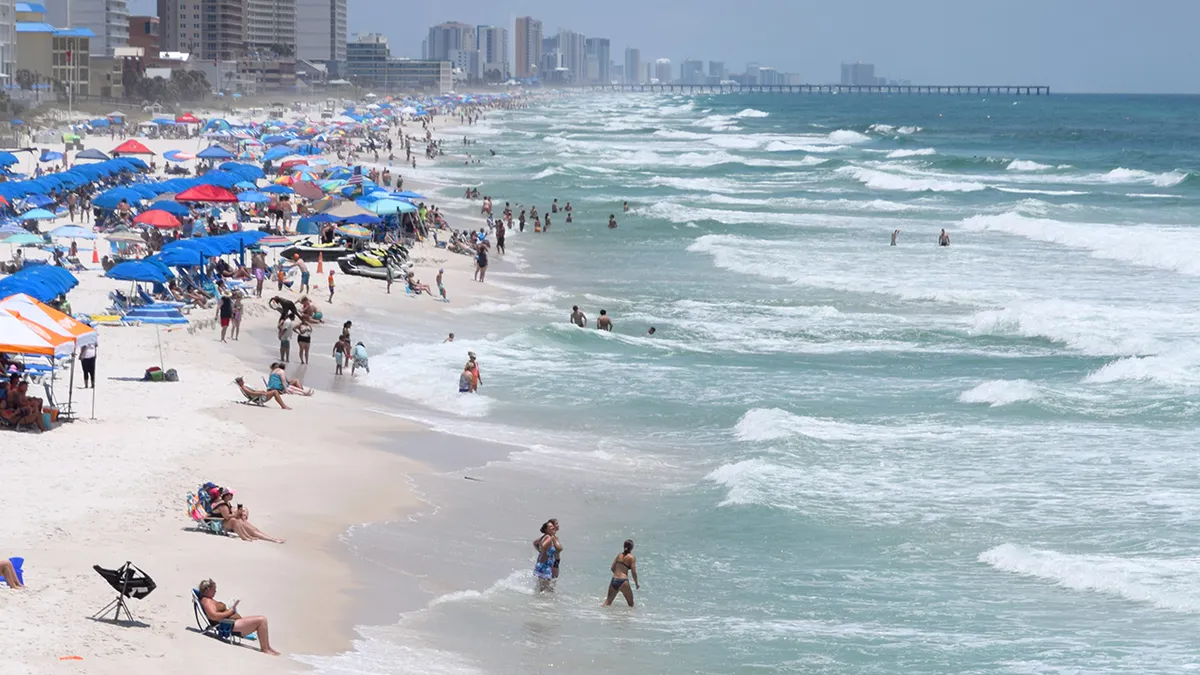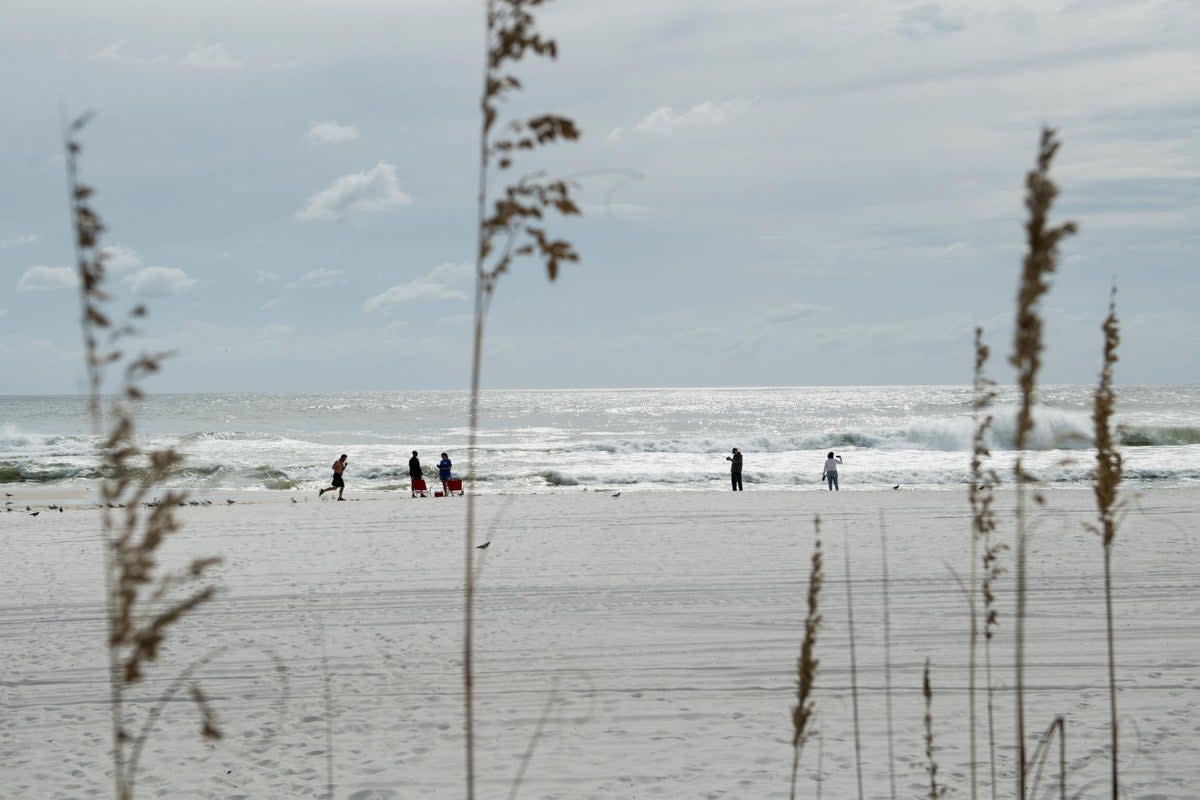Rip Current Dynamics: Panama City Beach Rip Current
Panama city beach rip current – Panama City Beach is notorious for its powerful and unpredictable rip currents. These strong, narrow channels of fast-moving water can pose a significant hazard to swimmers, especially during high tide and rough surf conditions.
The sun beat down on Panama City Beach, the waves crashing against the shore. The rip currents were strong, and a few people were caught in them. Lifeguards rushed to their aid, but it was too late for one man.
His body was found a few hours later, washed up on the beach. The tragedy was a reminder of the dangers of swimming in the ocean, especially when the rip currents are strong. For more information on how to stay safe in the water, please visit the dodgers vs rockies prediction.
Meanwhile, the Panama City Beach lifeguards continued their search for any other swimmers who may have been caught in the rip currents.
Rip currents are formed when waves break near the shoreline and the water rushes back into the ocean. Some of this water flows back in a straight line, while other portions flow sideways, creating a channel of fast-moving water. The speed of the current can vary significantly, but it can reach up to 8 feet per second (2.4 meters per second).
Panama City Beach’s alluring waters hide a treacherous secret: rip currents. These invisible underwater forces can swiftly drag unsuspecting swimmers out to sea, leading to the tragic incidents of drowning in Panama City Beach. However, understanding rip currents and taking precautions can mitigate these risks, ensuring that visitors can safely enjoy the beach’s pristine beauty.
Formation and Characteristics
Rip currents are typically narrow, ranging from 10 to 100 feet (3 to 30 meters) wide. They can occur anywhere along the beach, but they are most common near jetties, piers, and other structures that disrupt the normal flow of water.
Rip currents are often difficult to spot, as they may not have any visible surface features. However, there are a few signs that can indicate the presence of a rip current, including:
- A break in the line of waves
- A choppy, turbulent area of water
- A channel of water that is moving faster than the surrounding water
Factors Influencing Strength and Frequency
The strength and frequency of rip currents can be influenced by a number of factors, including:
- Wave height and direction
- Tides
- Wind speed and direction
- Beach topography
Rip currents are most common during high tide and rough surf conditions. This is because the larger waves and stronger currents create more energy that can be used to generate rip currents.
Rip Current Safety and Prevention
Rip currents pose significant risks to swimmers and beachgoers. Understanding their dynamics and implementing safety measures is crucial to prevent accidents and ensure a safe and enjoyable beach experience.
Identifying and Avoiding Rip Currents
Rip currents are often difficult to spot, but there are several telltale signs to look out for:
- A break in the incoming wave pattern
- A choppy, turbulent area of water
- A channel of water flowing away from the shore
To avoid rip currents, it’s essential to:
- Swim at a beach with a lifeguard present
- Swim parallel to the shore, not directly out to sea
- Be aware of the weather conditions and avoid swimming in rough seas
Escaping Rip Currents
If caught in a rip current, remain calm and avoid panicking. Follow these steps to escape safely:
- Do not try to swim directly back to shore against the current
- Swim parallel to the shore until you reach calmer waters
- If you can’t swim out of the current, tread water and signal for help
Tips for Swimmers and Beachgoers
To ensure safety while swimming or enjoying the beach, follow these guidelines:
- Always swim with a buddy
- Be aware of your surroundings and the conditions of the water
- Obey lifeguard instructions and warning flags
- Learn basic water safety and CPR skills
Rip Current Monitoring and Forecasting

Rip currents are a serious hazard at Panama City Beach, and several methods are used to monitor and forecast their presence. Beach patrols and lifeguards are constantly on the lookout for rip currents, and they use a variety of visual cues to identify them. These cues include:
- A break in the line of waves
- A choppy, turbulent area of water
- A channel of water flowing away from the shore
In addition to visual cues, lifeguards and beach patrols also use technology to help them monitor and forecast rip currents. These technologies include:
- Radar systems that can detect changes in the water’s surface
- Buoys that measure the speed and direction of the current
- Computer models that can predict the formation of rip currents
By using a combination of visual cues and technology, lifeguards and beach patrols can identify and forecast rip currents with a high degree of accuracy. This information is then used to warn swimmers of the danger and to take steps to prevent drownings.
Weather Conditions and Beach Topography
The formation of rip currents is influenced by a number of factors, including weather conditions and beach topography.
- Weather conditions: Rip currents are most common during periods of high surf and strong winds. These conditions create strong currents that can pull swimmers away from the shore.
- Beach topography: The shape of the beach can also contribute to the formation of rip currents. Beaches with a steep slope are more likely to have rip currents than beaches with a gentle slope.
By understanding the factors that contribute to the formation of rip currents, lifeguards and beach patrols can better predict where and when they are likely to occur. This information can then be used to warn swimmers of the danger and to take steps to prevent drownings.
Available Resources and Technologies, Panama city beach rip current
There are a number of resources and technologies available to help swimmers avoid rip currents. These include:
- Beach flags: Beach flags are used to warn swimmers of the presence of rip currents. Red flags indicate that swimming is prohibited, yellow flags indicate that swimming is allowed but caution is advised, and green flags indicate that swimming is safe.
- Rip current rescue tubes: Rip current rescue tubes are devices that can be used to rescue swimmers who have been caught in a rip current. The tubes are attached to a rope, and lifeguards can use them to pull swimmers back to shore.
- Smartphones apps: There are a number of smartphone apps that can help swimmers avoid rip currents. These apps provide information on the location of rip currents, and they can also send alerts if a swimmer is approaching a rip current.
By using these resources and technologies, swimmers can help to reduce their risk of being caught in a rip current.
Role of Lifeguards and Beach Patrol
Lifeguards and beach patrols play a vital role in rip current safety. They are responsible for monitoring the beach for rip currents, warning swimmers of the danger, and rescuing swimmers who have been caught in a rip current.
Lifeguards and beach patrols are trained to identify rip currents and to take steps to prevent drownings. They use a variety of techniques to identify rip currents, including visual cues and technology. They also use a variety of methods to rescue swimmers who have been caught in a rip current, including using rescue tubes and jet skis.
Lifeguards and beach patrols are an essential part of rip current safety. They help to keep swimmers safe and to prevent drownings.
Panama City Beach’s treacherous waters can quickly turn deadly due to its strong rip currents. These powerful currents, often invisible to the naked eye, can pull even experienced swimmers out to sea. To avoid becoming a victim, it’s crucial to be aware of the warning signs and heed the advice of lifeguards.
For more information on how to stay safe while enjoying Panama City Beach’s beautiful shores, visit panama city beach rip current.
The rip currents of Panama City Beach can be deadly, but lifeguard Landon Knack has saved countless lives. His bravery and dedication are an inspiration to us all. Knack’s story is a reminder that even in the face of danger, there are always those who are willing to risk their own lives to save others.
As the sun began to set over Panama City Beach, the relentless rip current that had claimed countless lives lay dormant. Its surface was deceptively calm, but beneath the water’s surface, it lurked, a silent predator waiting for its next victim.
In the distance, the roar of the crowd at the Dodger vs. Angels game echoed through the air, a reminder that life continued on despite the hidden dangers that lurked in the shadows. Yet, as darkness enveloped the beach, the rip current remained a constant threat, a reminder that even in the most serene of settings, danger could strike at any moment.
